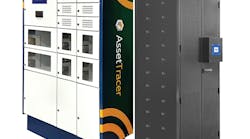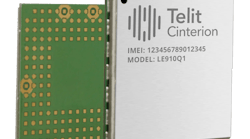DUBLIN, Ireland, October 21 /PRNewswire/ -- By 2015 900 billion food items could be RFID tagged, and 824 million livestock will have more sophisticated, more expensive tags on or in them.
Recent devastating outbreaks such as foot and mouth disease, mad cow disease and avian flu plus contamination recalls and bioterrorism are driving strict new legislation on food traceability. In addition, consumers are also demanding more information about the food they consume (as do the police and customs).
Research and Markets has announced the addition of Food and Livestock Traceability to their offering.
This report analyses the need for RFID, DNA and other technologies to enable food traceability. Ten year forecasts, case studies and technology evaluations provide a complete analysis on the topic in this 250 page market intelligence report researched globally by our experts.
Traceability has become a buzzword in the food industry. Consumer demands for higher-quality foods and more variety have never been greater. Spurred on by recent food scares around the world, such as mad cow disease and bioterrorism fears, governments are forcing the adoption of food traceability systems.
Everyone from producer to retailer will be affected by food traceability. This state-of-the-art review deals with the key topics of traceability - technology, law, forecasts and case studies.
Report at a glance
Although tens of millions of RFID tags have been applied to livestock and food and millions of biometric procedures have been carried out, there is no analysis of the global situation and the lessons of success and failure. The potential for RFID tagging of livestock is billions yearly and the potential for radio tagging of food is in trillions a year, but what are the forecasts for such tagging at animal, pallet/case and item level for the next ten years? Which countries are in the lead and where will the next wave of technologies, laws and mandates be applied? These and other vital questions are answered for the first time in this major new report.
Written by Emma Napier, a practicing veterinarian, and Dr Peter Harrop, and backed by our technical experts located across the world, this report analyses what is going on from fish to cattle, from Botswana to Japan and Canada. It identifies the most impressive suppliers and putative suppliers, the new technologies, the market drivers and much more.
This industry is on the move in a major way. It includes market pull, with McDonald's the world's largest outlet for cooked meat recently mandating full traceability from suppliers and Wal-Mart, the world's largest retailer, mandating RFID on all incoming pallets and cases. This is a prelude to tagging everything. It has legal push with the new European Union legislation in 2005 demanding "one up one down" traceability and the US Homeland Security legislation demanding unprecedented levels of traceability. China and Japan are also in the lead, and they have their own concerns. For example, Japan is convicting criminals that pass off inferior foreign fish as coming from Japanese waters.
Billion dollar businesses will be created as a consequence - much the same as happened with barcodes years ago.
By 2015 900 billion food items could be RFID tagged, and 824 million livestock will have more sophisticated, more expensive tags on or in them. However, new technologies, now being developed, will be needed for the food items. The livestock figure could easily be doubled if chickens are tagged, something of vital interest to the Government of Thailand, which ships 400 million chicken carcasses yearly and could have its whole industry wiped out by the new, virulent avian flu.
For more information visit http://www.researchandmarkets.com/reports/c26259.

